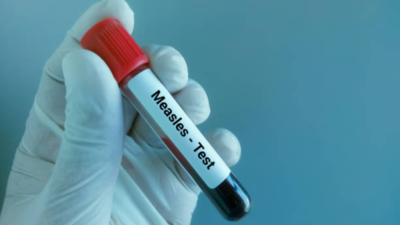ARTICLE AD BOX

It’s a heartbreaking story out of Los Angeles County: a school-aged child has died from a rare complication of measles known as Subacute Sclerosing Panencephalitis (SSPE). The child had contracted measles as an infant, before they were old enough to receive the MMR (measles, mumps, rubella) vaccine.The case is a sobering reminder that measles isn’t just a “harmless childhood illness.” In rare cases, the virus can silently linger in the body and cause deadly complications years later. Here’s what parents should know about SSPE, measles risks in children, and the importance of vaccination.
What is SSPE?
Subacute Sclerosing Panencephalitis (SSPE) is a progressive brain disorder caused by a measles infection that never fully clears.
Even after a child seems to recover from measles, the virus can hide in the brain, only to resurface years later. When it does, it slowly destroys the central nervous system.Most cases of SSPE develop 6–15 years after the original measles infection, but sometimes it can appear earlier. While SSPE is extremely rare, the risk is significantly higher in children who had measles before age 1 — a stage when they’re too young to be vaccinated.
Health officials stress that this is exactly why measles vaccination in the community is critical. High vaccine coverage helps protect the most vulnerable: infants who cannot yet receive the MMR shot.
How SSPE affects children
Once SSPE develops, it is devastating and almost always fatal. The disease moves through stages:Early warning signs: subtle changes such as irritability, mood swings, trouble concentrating in school, or mild memory issues.Neurological decline – seizures, jerky movements (known as myoclonic jerks), vision problems, and loss of speech. Motor skills also begin to deteriorate.Severe progression – muscle stiffness, difficulty swallowing, and worsening seizures. Eventually, the virus damages the brain regions that control breathing, blood pressure, and heart function.Most children with SSPE survive only 1–3 years after symptoms appear.
In rare cases, treatment may slow the disease slightly, but the outcome is almost always tragic.
Why this case matters
The Los Angeles child’s death underscores the long-term dangers of measles infection in the U.S. While measles is often dismissed as “just a rash and fever,” it can lead to life-threatening complications such as pneumonia, encephalitis (brain swelling), and SSPE.With measles cases on the rise again in parts of the U.S. due to declining vaccination rates, health experts warn we may see more SSPE cases in the coming years.
Each measles outbreak increases the risk for infants who are too young to be vaccinated and therefore completely dependent on community immunity.
Protecting children: The role of vaccination
The best protection against measles and its complications, including SSPE, is the MMR vaccine. The CDC recommends:First dose at 12–15 months of ageSecond dose at 4–6 years of ageVaccination not only shields individual children but also prevents community spread, which protects infants and immunocompromised people.SSPE is rare, but when it strikes, it’s fatal. Parents and caregivers should understand: measles is not a mild illness — it’s a serious virus with lifelong risks. Staying up to date on the MMR vaccine protects not just your child, but entire communities.



.png)
.png)
.png)
















 2 hours ago
5
2 hours ago
5







 English (US) ·
English (US) ·